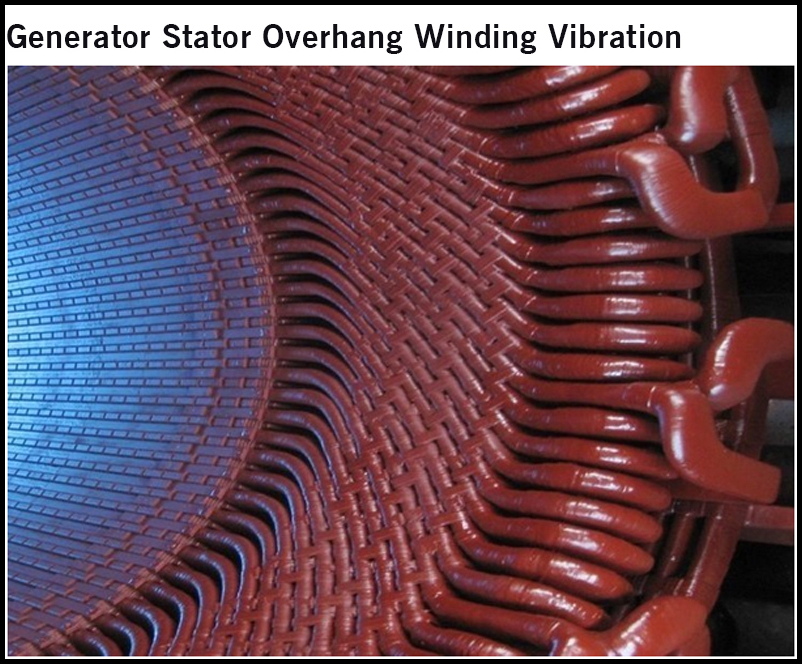
INTRODUCTION
The stator winding insulation system of generator on service is exposed to a combination of thermal, electrical, environmental and vibrational stresses. Stator bars in slot are subjected to a certain electromagnetic force resulted by interaction of the stator current and rotary magnetic field, as well as mechanical forces transmitted via the core and bearings at rotational speed what would make the bars into vibration. The electromagnetic force applied on the stator winding is 100Hz (or twice line frequency) alterative force. When the vibration frequency of the stator bars equal or close to 100Hz, the resonance of stator bars will occur. This resonance will cause high amplitude of vibration. The vibration makes the bar loosening, fatigue cracking of conductors and abrades the slot conductive of insulation. After that, slot discharge may occur across the air gap between the core iron and the bar surface, which is a common failure mechanism of stator winding insulation. At the generator end windings, high vibration lead to rubbing between the two surfaces i.e. coil to coil or coil to support which results in serious damage to stator insulation which require extensive out-of-service repairs. Some turbine generator stator windings have apparently failed due to a vibration of stator bars.
STRENGTH OF TECHNOLOGY
- These sensors are Fiber Optic based, therefore, these sensors do not have any constrain for mounting location & can be directly mounted on end winding.
- These sensors are indigenously built & cost effective to commercially available sensors
- These sensors are non-conductive & immune to EMI noise.
TECHNOLOGY BRIEF
Fiber grating is made by periodically changing the refraction index in the glass core of the fiber. When a light beam is sent to an FBG, each segment reflects a specific frequency of light depending upon the FBG design, called the Bragg wavelength, while transmitting all others. Any changes in strain and temperature affect both the refractive index and grating period which changes bragg wavelength which is corresponding to vibration.

